30+ Sample After Action Report
-
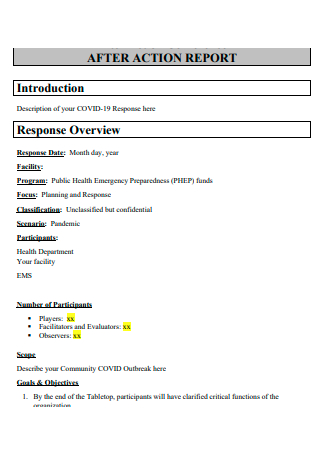
After Action Report Template
download now -
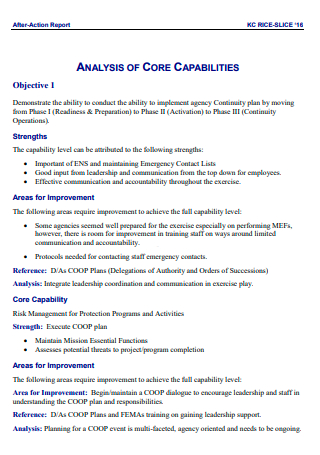
Standard After Action Report
download now -
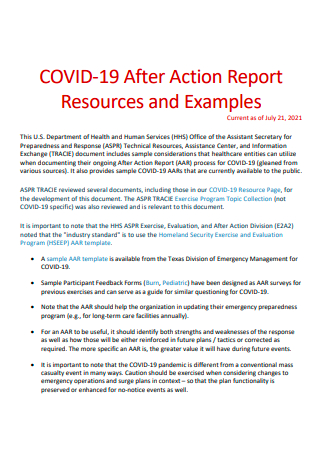
Covid-19 After Action Report
download now -
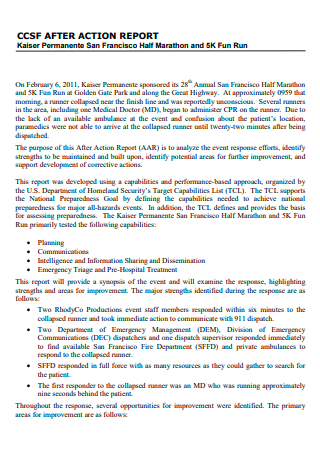
After Action Report in PDF
download now -
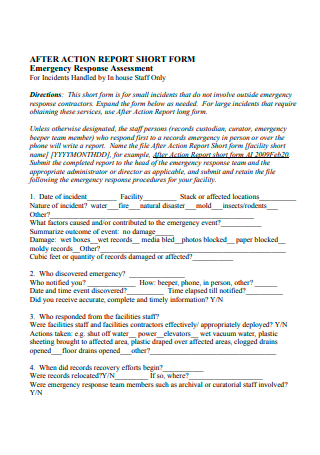
After Action Report Short Form
download now -
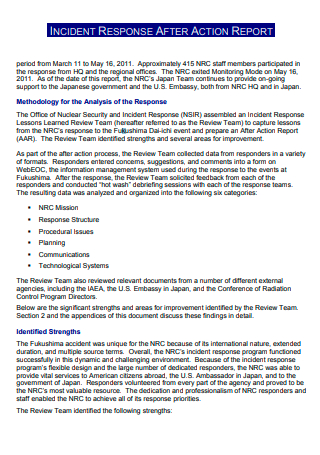
Incident Response After Action Report
download now -
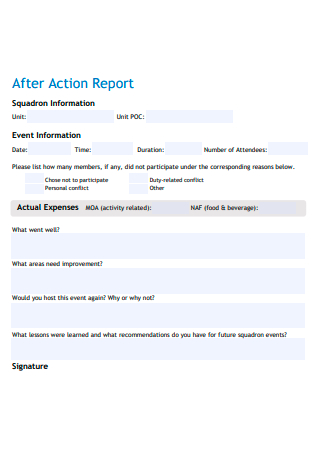
Formal After Action Report
download now -
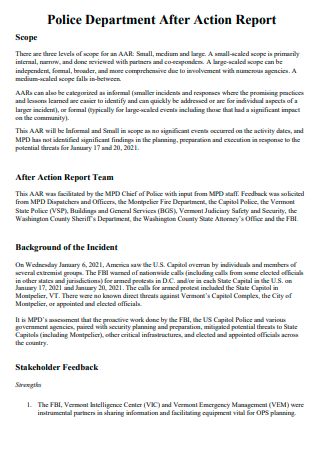
Police Department After Action Report
download now -
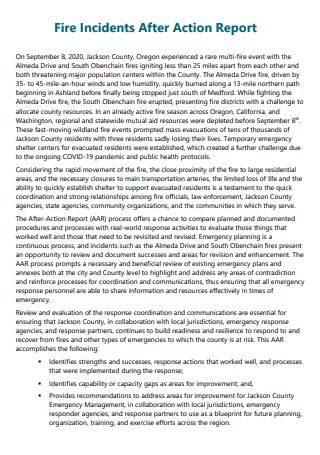
Fire Incidents After Action Report
download now -
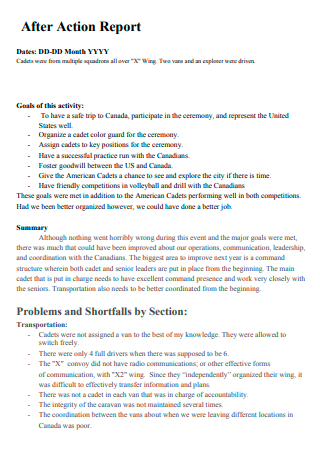
After Action Report Example
download now -
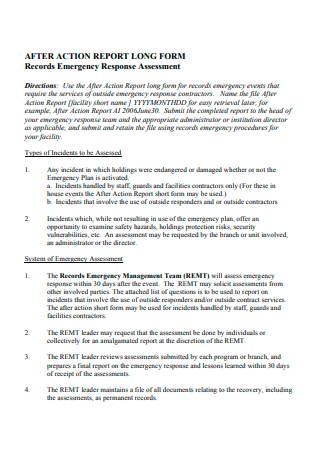
After Action Report Long Form
download now -
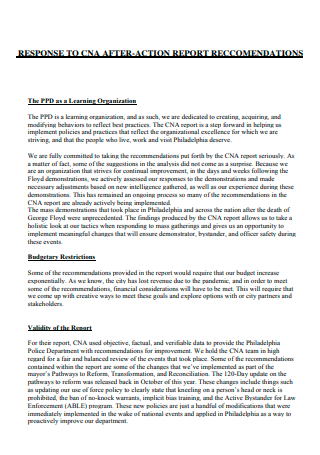
Response to After Action Report Recomendations
download now -
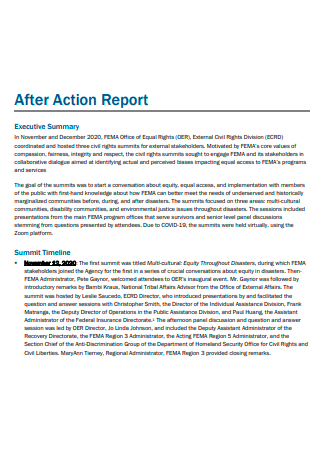
Basic After Action Report
download now -
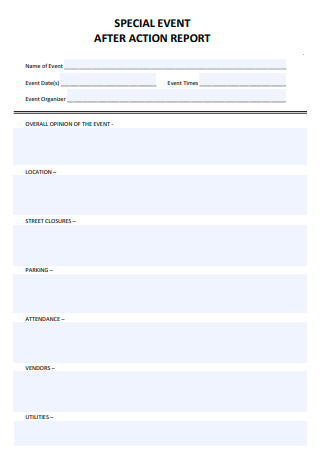
Special Event After Action Report
download now -

Printable After Action Report
download now -
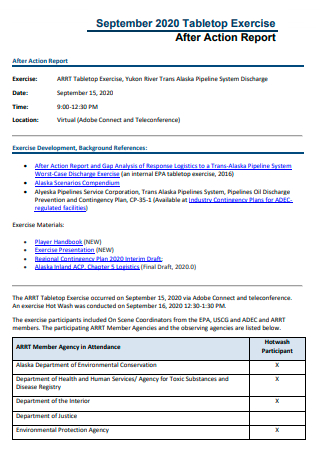
Exercise After Action Report
download now -
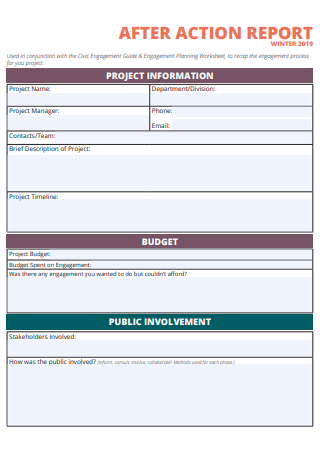
Sample After Action Report
download now -
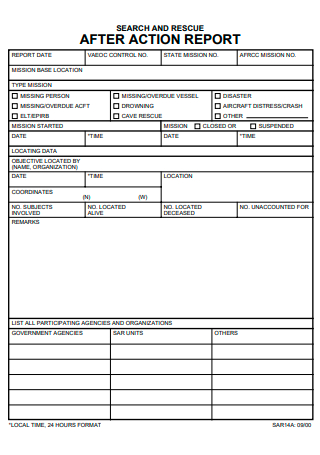
After Action Report Format
download now -
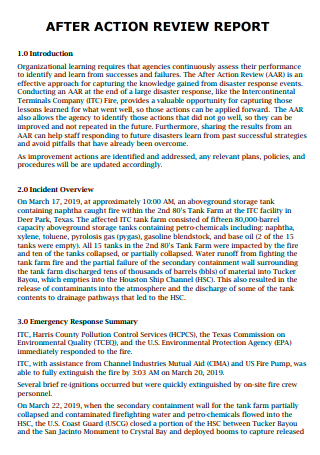
After Action Review Report
download now -
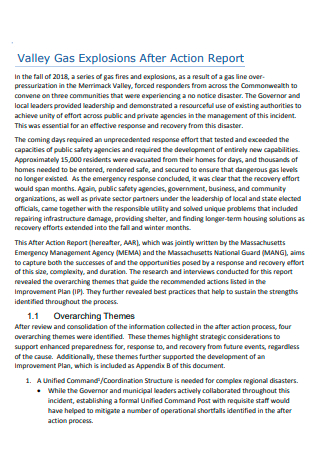
Valley Gas Explosions After Action Report
download now -
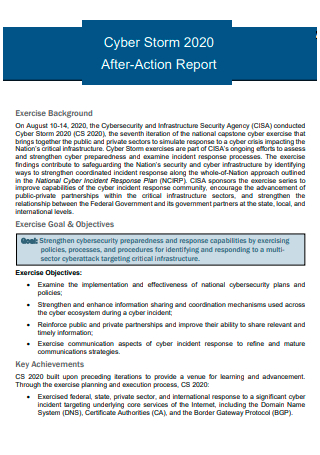
Cyber Storm After Action Report
download now -
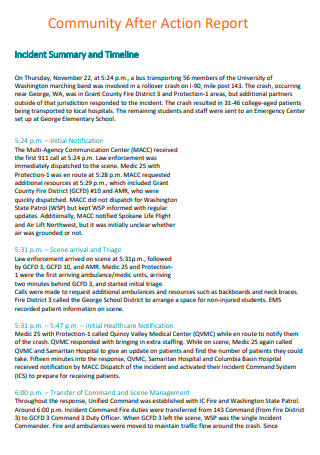
Community After Action Report
download now -
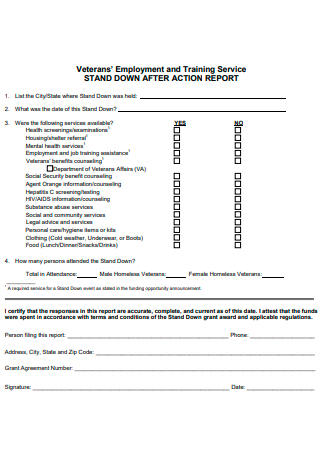
Stand Down After Action Report
download now -
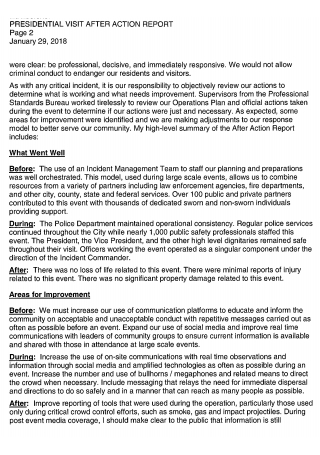
Visit After Action Report
download now -
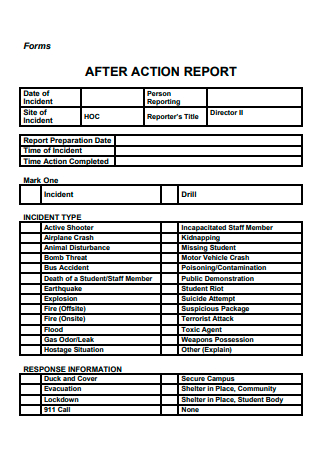
After Action Report Form
download now -
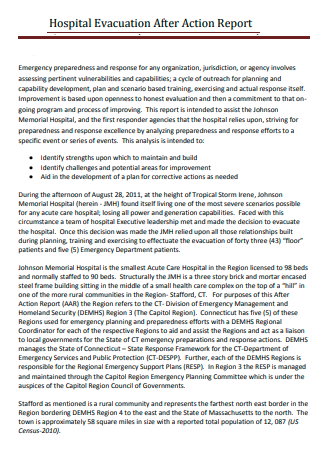
Hospital Evacuation After Action Report
download now -
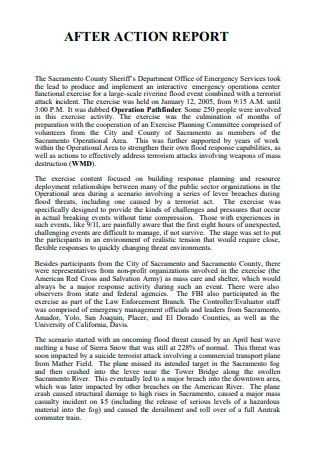
Draft After Action Report
download now -
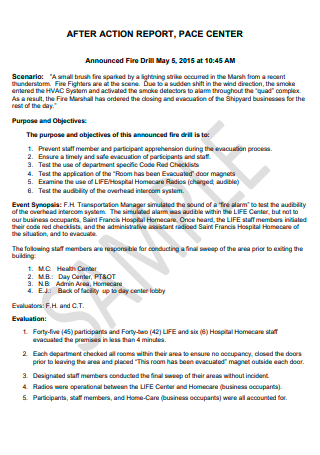
Center After Action Report
download now -
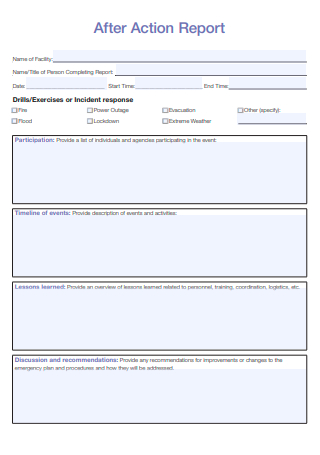
Simple After Action Report
download now -
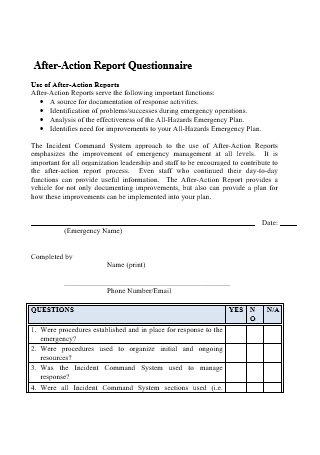
After Action Report Questionnaire
download now -
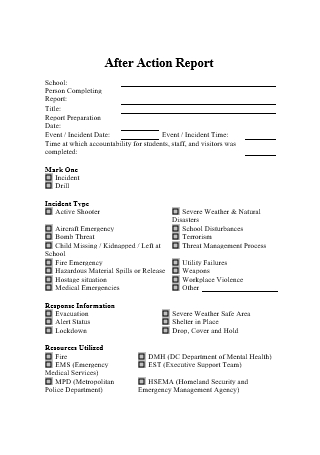
After Action Report in DOC
download now
FREE After Action Report s to Download
30+ Sample After Action Report
What is an After Action Report?
Different Types of After Action Reports
Basic Elements of an After Action Report
How to Write an After Action Report
FAQs
What are some examples of after action reports?
What are the essential parts of an after action review?
What specific types of questions should be asked and how to use them during an after action review?
Why are after action reviews essential in businesses and organizations?
What is an After Action Report?
An after action report is a comprehensive and well-coordinated written document that fully explains a particular action or event that has happened with an in-depth analysis of what went right, what went wrong and then observing on how that particular action can be improved for the future. It is a beneficial communication and diagnostic tool that investigates the management or response to a specific exercise, event, incident, or training by determining and measuring the strengths to be preserved and established while detecting possible areas of improvement.
A 2021 statistical report revealed that employers reported 2.7 million injury and illness cases in private industry, down 5.7% from 2019. Injury cases declined to 2.1 million in 2020 from 2.7 million in 2019. However, illness cases more than quadrupled to 544,000 cases in 2020, mainly due to viruses which include COVID-19 pandemic related illnesses. These incidents and events are analyzed by several health and medical institutions so that they are able to learn, understand, and apply what they need to perform and how they will act when these situations happen again in the near future. Thus, all types of project managers, analysts, and professionals such as medical professionals, fire safety officers, emergency response officers, air force officers, and many others should record and examine the completion of a particular event or the effects of a specific incident while creating a clear and systematic after action report.
Different Types of After Action Reports
All professionals and personnel in charge of writing after action reports should perform more than respond to trouble by being active participants as they engage the people involved in the incident or event in conversation. They also need to use all available information during the planning processIn this section, we will help you to fully learn and understand the different types of after action reports because your technique of writing is determined by the type of after action report you will prepare. Read the following details below:
1. COVID-19 After Action Report
According to an article published by Veoci, most of the emergency management plans were not equipped to deal with a crisis of the scope and magnitude of the COVID-19 pandemic. But, many emergency managers have learned from COVID-19 to utilize a complete after action report to guide them in assuring that the learning isn’t gone and that their jurisdiction or organization is prepared for the future of pandemic response. The data from the after action reporting enables professionals like you to objectively look at the past to develop an impressive and relevant plan about the future. When you write a COVID-19 after action report, describe your health institution and include details about the documents required and standards for the after action reporting of the COVID-19. For instance, include a sample of the after action report templates available from the division of your emergency management for COVID-19, and sample participant feedback forms. Make sure that the after action report should help the organization in updating their emergency preparedness program which includes long-term care facilities annually. Identify both strengths and weaknesses of the response as well as how those will be either reinforced in future plans/tactics or corrected as necessary. Note that the COVID-19 pandemic is different from a conventional mass casualty event in various ways.
2. Incident Response After Action Report
How many incidents do you respond to in a given month? What is the ratio of incidents to respond the same way to both? How many occurred per month over the last two years? Are incident severity/priority levels used and/or consistently applied throughout the incident response organization? What reports/data analysis regarding incident response do you have? When an incident occurs, is there a defined plan for response and escalation? Is there a core team with 24×7 on-duty responsibilities or is the team on call? Consider these questions when you are working on your incident response after action report. If you need to complete an after action report for the incident management of your business operations, you must identify the issue, determine if issue is an incident or an event, dispatch the designated incident response team, assemble the response team mean time to assemble or MTTA, set command, organize resources, and establish incident objectives as stated by the book Incident Management for Operations. When writing an incident response after action report, your review team must analyze and organize the resulting data through these categories: mission, response structure, procedural issues, planning, communications, and technological systems. Describe the identified strengths of the incident response team as well.
3. Police Department After Action Report
For the police department after action report, you need to explain the scope, introduce the after action report team, describe the background of the incident, and detail the stakeholder feedback. For instance, indicate that there are three levels of scope for an after action report: Small, medium, and large. A small-scaled scope is mainly internal, narrow, and reviewed with partners and co-respondents. A medium-scaled scope falls in between the small and large scope. A large-scaled scope can be independent, formal, broader, and more comprehensive due to involvement with numerous agencies.
4. Cyber Storm After Action Report
If you are preparing for a cyber storm after-action report, it is essential that you specify the cyber storm exercise goal and objectives, and key achievements. For example, write in the goal and objectives that your cyber incident response team will strengthen cybersecurity preparedness and response capabilities by exercising policies, processes, and procedures for identifying and responding to a multi sector cyberattack targeting critical infrastructure.
Basic Elements of an After Action Report
In this section, you will learn how to construct a remarkably written and well-detailed after action report. However, an after action report has different features. Include the following elements for you to create an impressive document:
How to Write an After Action Report
An after action report can effectively outline the outcomes of the event, incident, or project while including a comprehensive analysis on what happened and allow professionals in charge of the event or project to make corrections and strategize in the future and improve their practice. Below are some easy-to-follow tips that indicate how to design and write a professional after action report:
Step 1: Write the Introduction
When you write the introduction of your after action report, explain that your emergency response or incident management team will continuously assess their performance to be able to identify and learn from accomplishments and failures. Point out the main purpose and goal of the after action report which is to be an effective approach for capturing the knowledge acquired from disaster response events. Also, the after action report also allows the emergency team to identify those actions that did not go well, so they can be improved and not repeated in the future if a similar event or incident happens again.
Step 2: Include an Overview of the Incident
Be natural and specific when you include an overview of the incident. Add the specific date, time and location of the incident. Describe what the incident is all about as you tell the readers of your report what happened at the scene. Ask some people who witnessed the incident and collect information about the incident. Check other possible sources of information which can greatly help you in creating a simple and cohesive overview of the incident.
Step 3: Create the Emergency Response Summary
For the summary of the emergency response to the event or incident, briefly summarize the sequence of the events or incidents happened. It is fundamental that you describe some important points on what happened, and how the event or incident happened. Your crisis management team should discuss thoroughly about managing the incident or participating in the crisis management, and reporting the main points of the incident to the firm, management or organization.
Step 4: Develop the Analysis of the After Action Report
The next step is you need to develop an incident or event analysis. After the occurrence of an event or incident and when the situation is stable, an analysis of what occurred and why should a comprehensive analysis be conducted to measure the immediate extent or range of the damage and the potential for subsequent additional damage. Thus, assessing the events to determine what went well, what did not go so well, and what significant improvements to current plans should be made must also be included of the process of the after action reporting.
Step 5: Proofread, Revise, and Prepare the Final After Action Report
Take time to proofread and revise your overall after action report and check if you fully include all the crucial elements in your report. After the proofreading and revision process, you can now prepare the final after action report. Incorporate some notes and other messages you want to inform the management on the last part of your document. Skim your after action report for final evaluation and quality check.
FAQs
What are some examples of after action reports?
Some examples of after action reports are standard after action report, COVID-19 after action report, after action report short form, incident response after action report, formal after action report, police department after action report, fire incidents after action report, after action report long form, special event after action report, printable after action report, after action review report, cyber storm after action report, community after action report, stand down after action report, visit after action report, hospital evacuation after action report, and more.
What are the essential parts of an after action review?
The essential parts of an after action review are the planning phase, the preparation, the actual conduct with the after action report and following through the results. It is important to plan your after action review carefully so that you are able to identify the location early on where you are going to do it and determine who is going to attend. Gather all the information or the equipment pieces that you will need for your after action review and set a time to provide your subordinates to conduct their own internal after action review prior coming together as a group. Always record notes and collect all observations from subordinate leaders, prepare your location and rehearse. Emphasize to your members that you want to create an environment filled with open, critical and honest sharing of information. Conduct the sample format of the after action review and carefully plan how you will develop the after action report. Then, create a plan to share and disseminate the information that was gleaned during the after action review about the incident.
What specific types of questions should be asked and how to use them during an after action review?
All teams from various business firms and corporations should use these four questions when conducting an after action review: What did we anticipate to happen? What actually occurred? What went well and why? What can we improve upon and how? The first question will help you to enlighten major topics such as whether the event or project was fulfilled if the target audience was reached. The second question will guide you in exploring both the good and bad of what really went down in the event or project. Give your team some time to contemplate on the question and reflect upon their answers. Then, glean insight from each individual team member. The third question will assist you in digging deeper and identifying the reasons why the event or project went that direction. The final question involves your team members and how they can improve their methods in tackling the event or project.
Why are after action reviews essential in businesses and organizations?
After action reviews are essential in businesses and organizations because these reviews are useful tools to define past mistakes to be able to correct them and utilize other methods and develop effective tactics in order to fully enhance future performance of the teams and personnel from businesses and organizations. Additionally, these reviews guide the managers and other key professionals to evaluate and investigate the outcomes of a specific event, project or incident, and collect valuable information that they can use when similar events, projects or incidents take place in the future.
Dale Carnegie said: “Your purpose is to make your audience see what you saw, hear what you heard, feel what you felt. Relevant detail, couched in concrete, colorful language, is the best way to recreate the incident as it happened and to picture it for the audience.” To be successful in after action report writing, it is fundamental that you always consider your readers as you think about what they want from you after action report and why. When writing your report, keep the reader-centered approach so that you are able to relay the important points of the incident or event. So, here are some of our downloadable and printable after action report samples available in different kinds of formats such as community after action report, stand down after action report, visit after action report, hospital evacuation after action report, and many others. Simply click our sample after action reports in this article and start downloading now!
